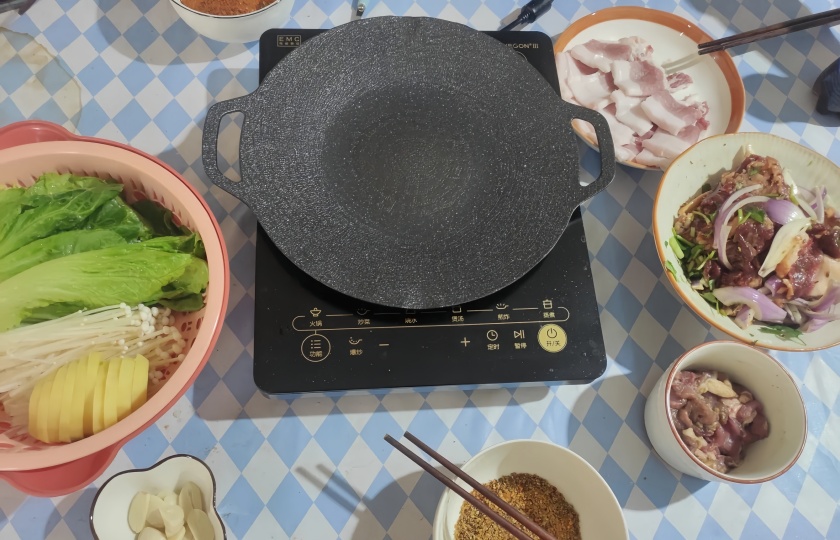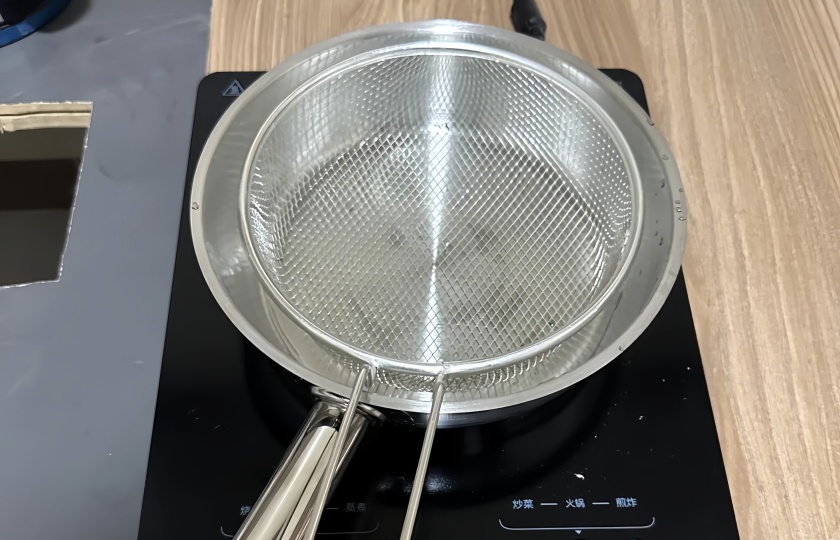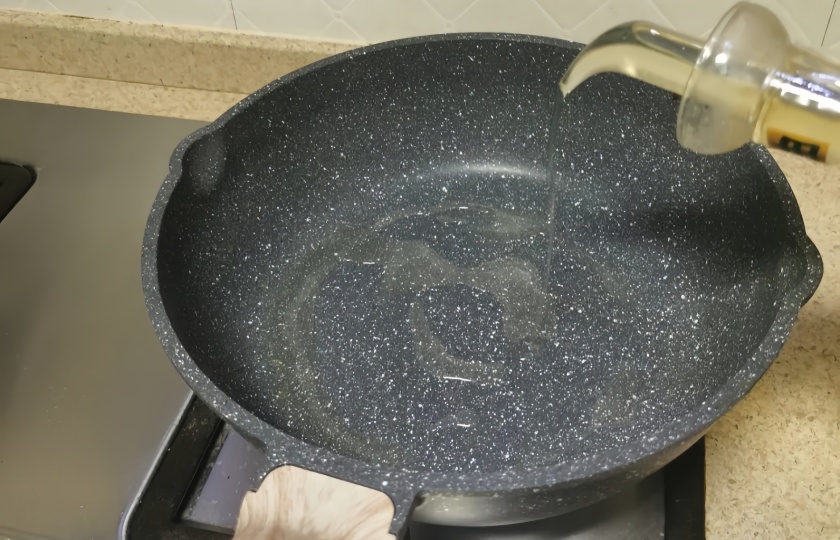Kitchen Test: Can You Cook Stone Pot on Induction Stove

With the popularity of kitchen appliances, more and more people are beginning to think about the compatibility of traditional utensils and modern equipment. Can induction cookers and stone pots become partners? Lets find the answer together.
Can you use a stone pot on an induction stove?
The key to using a stone pot on an induction cooker lies in material compatibility. Ordinary pure stone pots, such as those made of common granite and medical stone, cannot be used normally on an induction cooker because induction cookers rely on electromagnetic induction to generate eddy currents to heat metal materials.
If you want to use it, you need to choose a composite material stone pot specially adapted for induction cookers. When purchasing, be sure to carefully check the product description to make sure it is marked as usable on induction cookers.
When using this kind of stone pot, temperature control is very important. Do not let the temperature rise or fall sharply, because a sudden change in temperature can easily cause the stone pot to crack. Only by correctly choosing a stone pot suitable for induction cookers and using it reasonably can we ensure the smooth progress of cooking and at the same time ensure that the use process is safe and free from accidents.
What pots cannot be used on induction?
Pure aluminum cookware and frying pans: Aluminum has weak magnetic permeability. The magnetic field of induction cookers is difficult to generate eddy currents and heat inside it, so it cannot effectively heat up for cooking and is not suitable for induction cookers.
Glass pots and glassware: Glass material has no magnetic permeability characteristics. Placed on an induction cooker, it cannot sense the magnetic field to generate heat and cannot meet cooking needs.
Pure copper cookware: Copper has excellent electrical conductivity but poor magnetic permeability. When an induction cooker is working, it is difficult to cause sufficient heat conversion in a copper pot and it is not suitable for use on an induction cookers.
Ceramic pots and casseroles: Mostly made of non-magnetic materials. In the electromagnetic environment of an induction cooker, it is impossible to form a thermal effect and it is difficult to be used for induction cooker cooking.
Ordinary stainless steel cookware: If there is insufficient magnetic permeability component, the induction cooker cannot cause it to generate sufficient heat, so it may not work properly on an induction cooker.
Traditional stone pots and stone casseroles: Usually made of non-magnetic natural stone, they cannot cooperate with the electromagnetic induction of induction cookers and cannot be used on induction cookers.
To judge whether cookware is suitable for induction cookers, you can test by placing a magnet close to the bottom of the pot. If it can be adsorbed, it is okay. When purchasing, it is very important to check the product description or look for the label indicating suitability for induction cookers.

Can you damage an induction hob by using wrong pans?
Using mismatched cookware can damage induction cookers and pose safety hazards. Induction cookers heat by electromagnetic induction. Non-magnetic cookware such as ceramics and glass cannot generate eddy currents. Continuous operation of induction cookers will cause overload and damage to internal components. If the bottom of a metal cookware is not flat, poor contact will cause local overheating and damage the heating panel.
To protect induction cookers, the following aspects should be done: First, choose cookware with the label indicating suitability for induction cookers. Second, the bottom of the pot needs to be flat and the size should be appropriate. Neither too small nor uneven is acceptable. Third, do not heat an empty pot. Once abnormal noises are heard or uneven heating is found, stop using it immediately. In this way, while ensuring the safety of induction cookers, cooking quality and energy-saving effects can be improved.
What are the disadvantages of an induction cooktop?
First, there are limitations on cookware. Induction cookers heat by the principle of electromagnetic induction and require that the cookware must be made of magnetic conductive materials. This means that cookware made of non-magnetic conductive materials such as ceramic pots and glass pots cannot be used on induction cookers, and the usage range is not as wide as that of traditional stoves.
Second, in terms of cooking effects. The heating method of induction cookers is relatively concentrated at the bottom of the pot. For some cooking methods that require uniform heating, it is relatively difficult to achieve uniform heating on the sides of a steak when frying a steak. Moreover, during use, if the bottom of the cookware is not flat, it will lead to uneven heating and affect cooking quality.
Furthermore, induction cookers will generate a certain amount of electromagnetic radiation when working. Although the electromagnetic radiation of regular products is within a safe range, it still makes some users have concerns. And induction cookers have complex electronic components inside. After long-term use, these components may fail and the maintenance cost is relatively high.

Can you put stoneware on an electric stove?
Generally, it is not recommended to put ordinary pottery on an electric stove. Because electric stoves heat up by heating resistance wires. Ordinary pottery has poor thermal conductivity and may not be able to withstand rapid temperature changes in a high-temperature environment. When pottery is heated on an electric stove, it may crack due to uneven heating.
For example, during the heating process, the bottom of pottery in contact with the heat source of the electric stove rises in temperature rapidly, while the temperature change at the upper part is slow. This temperature difference will generate internal stress and lead to damage to the pottery.
What happens if you put foil on an induction hob?
Spark ignition: Foil is highly conductive and thin. Under the action of the magnetic field of the induction cooker, the current conduction is prone to disorder, thereby generating electric sparks and posing a risk of fire.
Damage to the induction cooker panel: When the induction cooker is working, the foil may generate local high temperatures or discharge phenomena on the panel due to electromagnetic effects, resulting in burn marks, cracks and other damages on the panel.
Generate abnormal high temperatures: Since foil cannot evenly distribute heat like a suitable pot, it will accumulate a large amount of thermal energy. Not only will it quickly heat up, melt and deform itself, but it may also affect the internal components of the induction cooker.
Increase the risk of electric shock: The interference of foil to the electric field of the induction cooker may make the surrounding electric field unstable. Users have a greater chance of coming into contact with abnormal currents during the operation, increasing the risk of electric shock.
Affect service life: Frequent use of foil on the induction cooker will disrupt its normal electromagnetic induction heating rhythm, keep the internal circuits and components in an abnormal working state for a long time, accelerate equipment aging and shorten service life.























